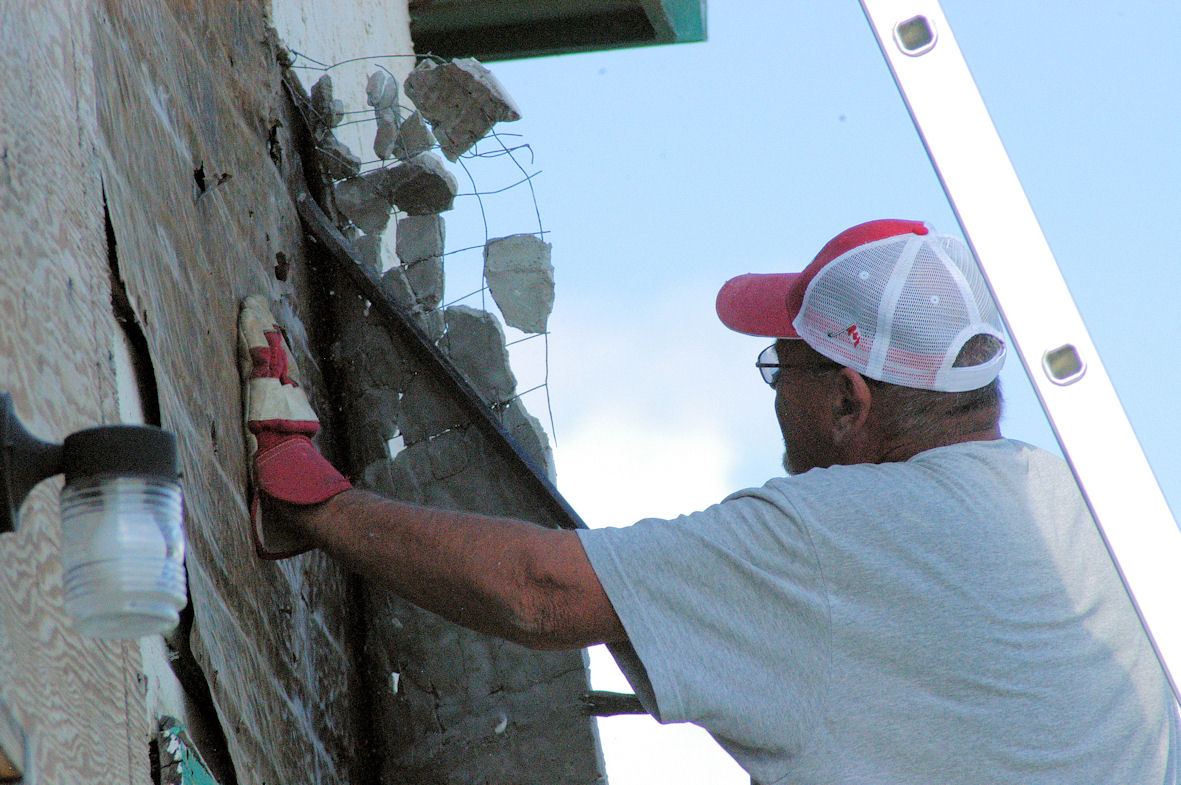Complex construction sites require frequent inspections to ensure plans are running smoothly and safety precautions are in place. Security cameras help to streamline the inspection process and reduce costly incidents that could derail project timelines.
Security camera systems with remote monitoring capabilities enable project managers or authorized individuals to access live and recorded footage from anywhere. Features of Construction Security Camera such as tamper-resistant designs, motion detection and alerts, and integration with access control systems can further enhance security.
 Deterring Crime
Deterring Crime
Construction sites are incredibly complex settings. There are skilled artisans of all types working to create safe structures, investors looking for a return on their investment, and security personnel tasked with monitoring all activity that takes place in and around the site. Managing all of this complexity requires the right tools to make sure everyone is on the same page and doing what they’re supposed to do.
One such tool is surveillance cameras. When strategically placed on construction sites, CCTV helps to deter crime and improve safety and operational efficiency.
Thievery is a common problem on construction sites. Theft of equipment and materials slows projects down and forces workers to work with outdated or broken tools. It can also cost construction companies a lot of money to replace stolen items and may require days or months to process insurance claims.
Visible CCTV cameras, especially those that are equipped with strobes and sirens, act as an effective deterrent to thieves and vandals by signaling that the site is under surveillance. The real-time dispatch of police officers that come from a surveillance camera system further minimizes the window of opportunity for criminals to commit crimes by reducing the time they have before law enforcement arrives on-site.
Deterring Trespassers
The expensive equipment and materials on construction sites make them attractive targets for thieves and vandals. To deter trespassing, security cameras on construction sites can alert law enforcement or security guards of any unauthorized activity via automated alerts. This enables them to act quickly and deter crime before it can happen.
Furthermore, video surveillance can also be used to document evidence if an incident does occur on the site. This can help prevent bogus liability claims that could threaten a company’s bottom line. If a worker or third party makes a claim against your company for damages, footage captured on camera can authenticate the event and disprove any false allegations made.
Having visible security cameras on a construction site can be an effective deterrent, especially when they’re equipped with blue flashing lights and sirens that act as unmistakable warning signs for potential intruders. Additionally, remote surveillance solutions such as WCCTV’s mobile solar trailers can be deployed on a rental basis at up to 87% less than the cost of security guards. This is especially true when factoring in hourly rates, travel time, severance, and holiday premiums. This allows a business to save money without sacrificing quality or results.
Deterring Unauthorized Access
Security cameras, especially those equipped with strobes and sirens can act as visible deterrents to potential thieves and vandals. However, integrating a management system that provides real-time dispatch of emergency services takes security to the next level. This reduces the window of opportunity criminals have to steal, destroy, or damage equipment before authorities arrive.
Additionally, AI cameras can detect unauthorized pedestrian intrusion into construction vehicle access zones and proactively alert the authorities. They can also monitor adherence to physical barriers that prevent personnel from entering work areas, improving overall site safety and security.
Another big advantage of video monitoring is the ability to prove a construction company took reasonable safety precautions in case a negligence lawsuit arises. Insurance costs can also be reduced by implementing a comprehensive surveillance system. Portable cameras can be quickly deployed at remote sites or off-grid locations temporarily. The cameras’ tamper-resistant design ensures that they can’t be disabled or compromised on purpose. They can also be remotely monitored, allowing for the elimination of costly lapses in monitoring. This is particularly important at large or complex construction projects where unauthorized activity may go undetected for long periods.
Deterring Unsafe Practices
Construction sites are complex settings that involve a wide range of skilled artisans. This creates a challenging environment to manage. It is difficult to monitor everything happening at once, which can result in theft, vandalism, unauthorized access, and even accidents that can lead to project delays or loss of productivity.
Security cameras are a visible deterrent that can effectively discourage criminal activity at a job site. Visible cameras can send a message that the site is under surveillance and act as an effective visual deterrent, especially when placed in areas where valuable materials or machinery are stored. They can also be mounted at high vantage points to provide a wider coverage area.
Often, these cameras are designed with motion detection and alerts that notify staff of any suspicious activities. This can help to prevent false alarms that are caused by natural elements like wind-blown debris or wildlife and allow staff to take immediate action.
The best surveillance camera for a construction site should be equipped with high-resolution video capture and a robust network connection to ensure remote monitoring. It should also be durable enough to withstand the rigors of a construction site and have features like night vision, weather resistance, and a tamper-resistant design.
Documenting Incidents
A security camera system serves as a complete documentation tool for construction site activities, allowing project managers to assess any incidents quickly. Video footage can also be used in safety training for workers, promoting accountability and ensuring that best practices are followed consistently.
Many construction sites contain expensive materials like copper piping and tools that can be attractive targets for thieves and vandals. Visible job site surveillance cameras deter thieves by letting them know they’re being watched and give law enforcement the highest chance of making an identification if theft does occur.
Additionally, some insurance providers offer lower premiums for construction projects that use comprehensive security measures including surveillance. This can reduce a project’s overall insurance costs and improve its financial viability.
When selecting a job site security camera solution, look for high-resolution cameras with features like infrared night vision. Ensure that the camera system has reliable power options and can be connected to a network infrastructure for remote monitoring capabilities. Additionally, consider the number and locations of entry points and challenging terrains that may limit camera visibility and opt for tamper-resistant designs to keep your cameras secure. Then, optimize camera placement to cover these areas and eliminate blind spots.
Enforcing Compliance
The mere presence of surveillance cameras is a powerful deterrent to criminals, as thieves and vandals will be less likely to take risks on a construction site where they know security cameras are present. Some surveillance systems are also able to alert police and security patrols immediately when an intrusion is detected, ensuring that any potential crime can be prevented before it has a chance to happen.
For additional deterrence, many cutting-edge surveillance systems feature video analytics that enables real-time monitoring to identify suspicious activity and alert personnel to the situation. This allows for swift response to dangerous situations, reducing the risk of accidents and injuries on construction sites.
When choosing a surveillance camera system for your construction site, opt for one that features remote monitoring capabilities via mobile apps or web interfaces. This gives project managers, security personnel, and other authorized individuals a complete overview of the construction site at any time, even when they’re not on-site. Additionally, consider a solution that offers motion detection technology, which activates recording only when movement is detected. This saves storage space and prevents recording from being triggered by irrelevant movements. Finally, choose a weatherproof solution that can withstand the harsh conditions of a construction site.
Predictive Maintenance
Surveillance cameras are commonly used in public areas and provide an excellent tool for detecting potential security threats or criminal activity. They can also be used to monitor employees, ensure compliance with safety regulations, and track productivity.
Video surveillance systems allow security personnel to simultaneously monitor live and archived footage of an area, allowing them to confirm any suspicious behavior and act quickly. They can also be used to record license plates for use in law enforcement cases and can detect heat-based movement such as a person moving within a room or vehicle.
To utilize predictive maintenance with your surveillance equipment, start by identifying the most critical assets in your business. Then, collect relevant data about those assets including sensor readings, performance logs, and maintenance records. This information will help you establish baseline performance metrics and failure patterns. Once you have that, the software can analyze the information and predict when maintenance should be performed.
Be sure to keep in mind that while video surveillance can be a valuable asset, it is not a replacement for regular inspections of your site. Regular visual inspections can help to identify issues before they turn into major faults which could cost you a great deal of money and leave your site unprotected.




